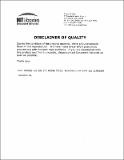| dc.contributor.advisor | Matthew A. Wilson. | en_US |
| dc.contributor.author | Sun, Linus Da-Shih, 1972- | en_US |
| dc.contributor.other | Massachusetts Institute of Technology. Dept. of Biology. | en_US |
| dc.date.accessioned | 2005-09-06T21:28:01Z | |
| dc.date.available | 2005-09-06T21:28:01Z | |
| dc.date.copyright | 2003 | en_US |
| dc.date.issued | 2004 | en_US |
| dc.identifier.uri | http://hdl.handle.net/1721.1/27046 | |
| dc.description | Thesis (Ph. D.)--Massachusetts Institute of Technology, Dept. of Biology, June 2004. | en_US |
| dc.description | Includes bibliographical references (p. 175-185). | en_US |
| dc.description.abstract | Postsynaptic density protein-95 (PSD-95) is the second most abundantly expressed synaptic protein in the postnatal forebrain. It is an integral part of the postsynaptic scaffolding complex and helps recruit receptors, channels and associated factors involved with synaptic transmission. A mouse whose wildtype gene was replaced with truncation mutant of PSD-95 preserving two PDZ binding domains causes a spatial learning and memory deficit and a dramatic enhancement of synaptic strengthening. Long Term Potentiation is enhanced at all frequencies of stimulation (1-100Hz), while Long Term Depression is absent in the mutants. This study explores CA1 pyramidal cell spatial representations in the PSD-95 mutant mice. Mutants are not significantly different than controls in running velocity. Nor are its pyramidal cells or interneurons different than controls in: place cell firing rates, sparsity of run active cells, bursting behavior, or theta modulated activity. However, mutants do exhibit significantly larger place fields and wider spike waveforms. Mutants also expressed enhanced directionality of place fields and increased post-run sleep correlation of firing for overlapping place fields. Mutants also exhibited disruption of asymmetrical place fields and phase precession, the first such observation reported in mice. In conclusion, LTP alone is not enough for the active process of encoding experience. Instead, bi-directional synaptic plasticity is necessary for proper place field formation, correlation, directionality, asymmetry, phase precession, and the formation of spatial memories. | en_US |
| dc.description.statementofresponsibility | by Linus Da-Shih Sun. | en_US |
| dc.format.extent | 185, [593]-604 p. | en_US |
| dc.format.extent | 15640481 bytes | |
| dc.format.extent | 15668795 bytes | |
| dc.format.mimetype | application/pdf | |
| dc.format.mimetype | application/pdf | |
| dc.language.iso | en_US | |
| dc.publisher | Massachusetts Institute of Technology | en_US |
| dc.rights | M.I.T. theses are protected by copyright. They may be viewed from this source for any purpose, but reproduction or distribution in any format is prohibited without written permission. See provided URL for inquiries about permission. | en_US |
| dc.rights.uri | http://dspace.mit.edu/handle/1721.1/7582 | |
| dc.subject | Biology. | en_US |
| dc.title | Impaired and enhanced spatial representation of the PSD-95 knockout mouse | en_US |
| dc.type | Thesis | en_US |
| dc.description.degree | Ph.D. | en_US |
| dc.contributor.department | Massachusetts Institute of Technology. Department of Biology | |
| dc.identifier.oclc | 56795379 | en_US |
